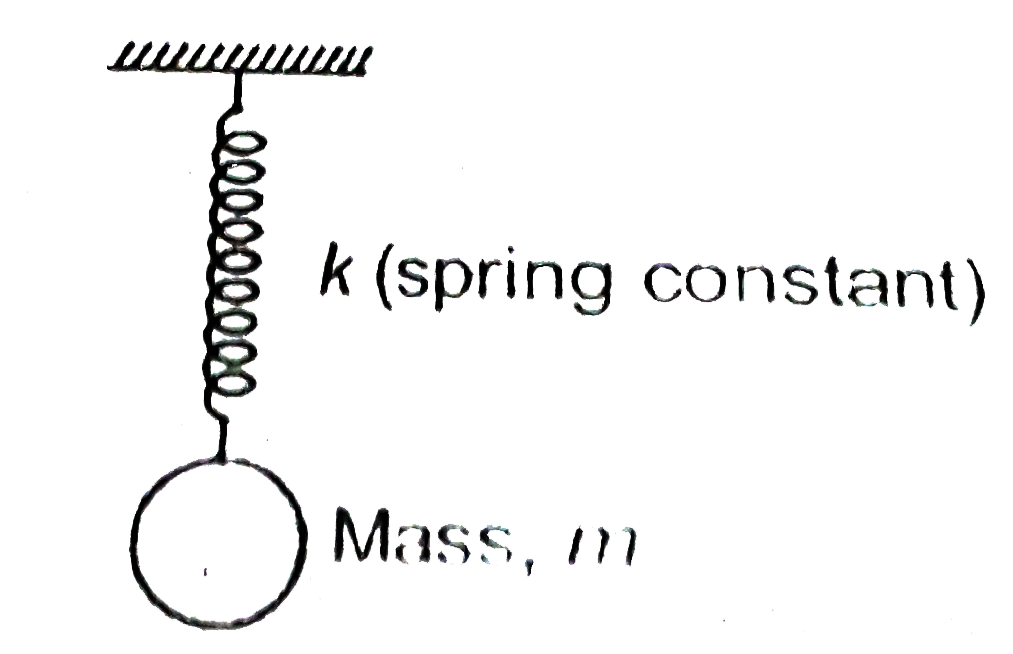A simple pendulum suspended from the celling of a stationary lift has period T0. When the lift descends at steady speed, the period is T1, and when it descends with constant downward acceleration, the period is T2 which one of the following is true?
T0=T1=T2
T0=T1<T2
T0=T1>T2
T0<T1<T2
The correct Answer is:B
To solve the problem, we need to analyze the behavior of a simple pendulum in different scenarios involving a lift. We will use the formula for the period of a simple pendulum and consider the effects of the lift's motion on the effective gravitational acceleration.
1. Understanding the Period of a Simple Pendulum:
The period T of a simple pendulum is given by the formula:
T=2π√Lg
where L is the length of the pendulum and g is the acceleration due to gravity.
2. Case 1: Stationary Lift:
When the lift is stationary, the period is:
T0=2π√Lg
3. Case 2: Lift Descending at Steady Speed:
When the lift descends at a steady speed, there is no acceleration acting on the pendulum. Thus, the effective gravitational acceleration remains the same:
T1=2π√Lg
Therefore, we have:
T1=T0
4. Case 3: Lift Descending with Constant Downward Acceleration:
When the lift descends with a constant downward acceleration a, we need to consider the effective gravitational acceleration. The effective gravitational acceleration geffective becomes:
geffective=g−a
Thus, the period in this case is:
T2=2π√Lg−a
5. Comparing the Periods:
- Since a is positive (the lift is accelerating downwards), g−a<g. This means that the denominator in the expression for T2 is less than that for T0 and T1, leading to:
T2>T0andT2>T1
- Since T0=T1, we conclude:
T0=T1<T2
Conclusion:
The final relationships between the periods are:
T0=T1<T2
Final Answer:
The correct option is T0=T1 and both are less than T2.
---
The period T of a simple pendulum is given by the formula:
T=2π√Lg
where L is the length of the pendulum and g is the acceleration due to gravity.
When the lift is stationary, the period is:
T0=2π√Lg
When the lift descends at a steady speed, there is no acceleration acting on the pendulum. Thus, the effective gravitational acceleration remains the same:
T1=2π√Lg
Therefore, we have:
T1=T0
When the lift descends with a constant downward acceleration a, we need to consider the effective gravitational acceleration. The effective gravitational acceleration geffective becomes:
geffective=g−a
Thus, the period in this case is:
T2=2π√Lg−a
- Since a is positive (the lift is accelerating downwards), g−a<g. This means that the denominator in the expression for T2 is less than that for T0 and T1, leading to:
T2>T0andT2>T1
- Since T0=T1, we conclude:
T0=T1<T2
The final relationships between the periods are:
T0=T1<T2
The correct option is T0=T1 and both are less than T2.
Topper's Solved these Questions
- OSCILLATIONSBOOK - AAKASH INSTITUTE ENGLISHCHAPTER - OSCILLATIONSEXERCISE - Assignment (Section - B) (OBJECTIVE TYPE QUESTIONS)
30 Videos
- OSCILLATIONSBOOK - AAKASH INSTITUTE ENGLISHCHAPTER - OSCILLATIONSEXERCISE - Assignment (Section C) (PREVIOUS YEARS QUESTIONS)
43 Videos
- OSCILLATIONSBOOK - AAKASH INSTITUTE ENGLISHCHAPTER - OSCILLATIONSEXERCISE - Exercise
18 Videos
- NUCLEIBOOK - AAKASH INSTITUTE ENGLISHCHAPTER - NUCLEIEXERCISE - ASSIGNMENT (SECTION-D)
10 Videos
- PHYSICAL WORLDBOOK - AAKASH INSTITUTE ENGLISHCHAPTER - PHYSICAL WORLDEXERCISE - ASSIGNMENT (Section-B)
4 Videos
Similar Questions
A simple pendulum is suspended from the ceilling of a left. When the lift is at rest, its time period is T. With what accleration should lift be acclerated upwards in order to reduce its time period to T2.
View SolutionA simple pendulum is suspended from the ceiling of a car and its period of oscillation is T when the car is at rest. The car starts moving on a horizontal road with a constant acceleration g (equal to the acceleration due to gravity, in magnitude) in the forward direction. To keep the time period same, the length of th pendulum
View Solution
Knowledge Check
A pendulum suspended from the ceiling of train has a period T When the train is at rest. When the train si accelerating with a uniform acceleratio a, the period of oscillation will
AincreaseBdecreaseCremained unaffectedDbecomes infinite
A pendulum suspended from the ceiling of the train has a time period of two seconds when the train is at rest, then the time period of the pendulum, if the train accelerates 10 m/s2 will be (g=10m/s2)
View SolutionTime period of a spring pendulum when lift moves downward with constant velocity v is T second. When the lift moves upward with constant acceleration=g3 , the time period will be

View SolutionA simple pendulum attached to the celling of a stationary lift has time period T. The lift starts moving and the position vector of the lift is given as →r(t)=15t2ˆi+15t2ˆj, where r(t) is in meters and t is in seconds. If g=10m/s2, the new time period of oscillation is
View SolutionA pendulum is suspended in a lit and its period of oscillation is T0 when the lift is stationary.
(i) What will be the period T of oscillation of pendulum, if the lift begins to accelerates downwards with an acceleration equal to 3g4 ?
View SolutionA coin is dropped in a lift. It takes time t1 to reach the floor when lift is stationary. It takes time t2 when lift is moving up with costant acceleration. Then
View SolutionA simple pendulum has some time period T. What will be the percentage change in its time period if its amplitude is decreased by 5%
View SolutionA pendulum is suspended in a ligt and its period of oscillation when the lift is stationary is Ta. What must be the accleraion of the lift for the period of oscillation of the pendulum to be T0/2?
View Solution
